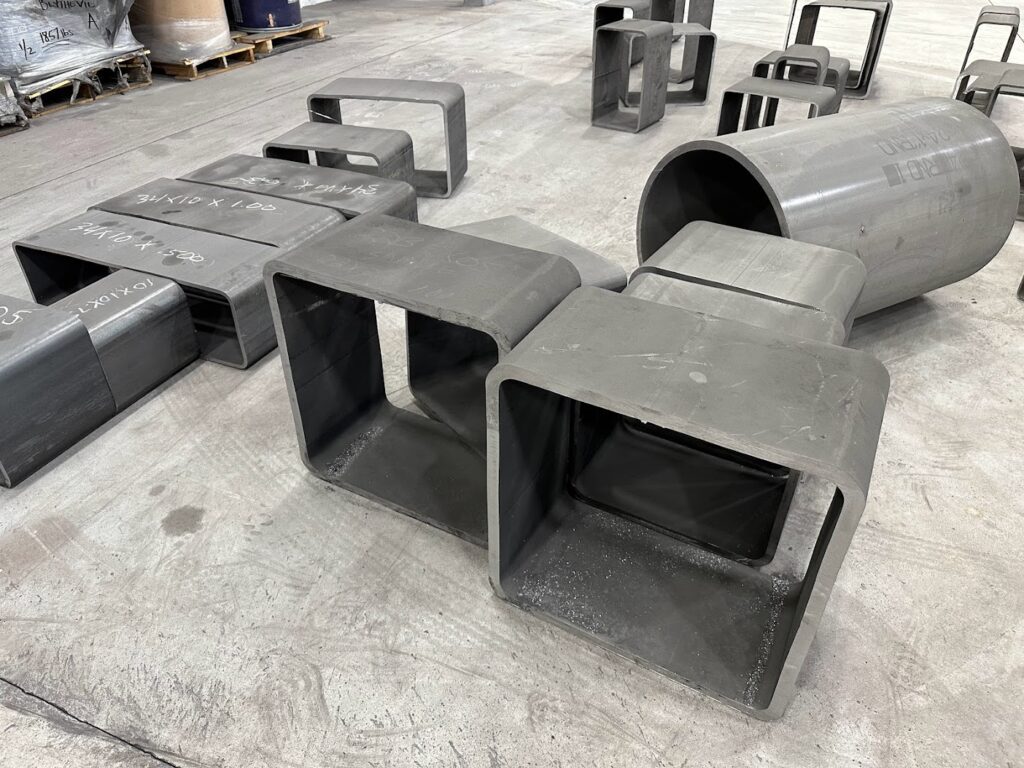HSS Fabrication Plant Visit
Cora Structural had the opportunity to visit the massive Atlas Tube facility in Blytheville, AR to see first hand how Hollow Structural Sections (officially HSS but you probably know them as ‘tubes’) are made. Starting with the initial unbuckling of the huge steel coils, continuing on to the splicing of plate ends and the slowly folding to round sections and eventual rectangular sections, to the continuous seam welds, and finally to the finish cutting and stacking, it was an incredible process to witness! And each step of the way is covered by critically important quality control measures and a highly trained staff.
DID YOU KNOW? All square and rectangular sections start as round sections, which are then methodically shaped into sections with flat edges by way of a series of rollers while simultaneously being doused with water to keep things cool and moving smoothly.
In our humble opinion, being in facilities producing the structural elements we design and specify daily provides an invaluable perspective that ultimately makes us better structural engineers. We are so thankful to Atlas Tube for the opportunity and for taking the time to show us around and answer all of our (many, many) questions.


